Blind rivet riveter: characteristics, varieties and applications
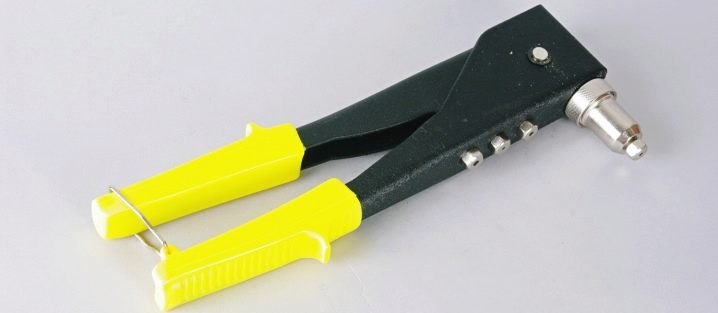
Riveting rivets are specialized tools and are widely used in many areas of human activity. High consumer demand for devices is due to the versatility of the connections formed with their help and their ease of use.
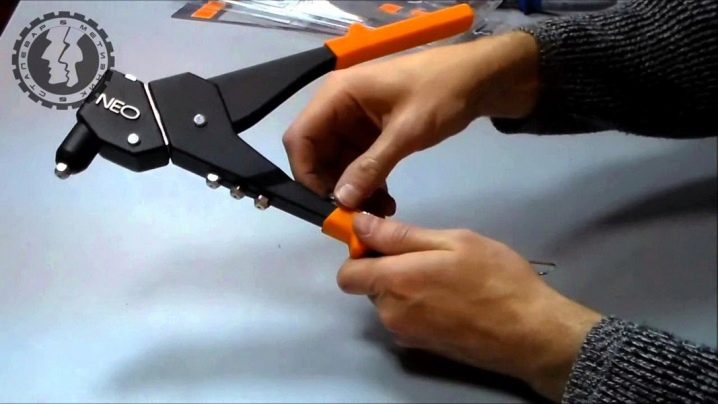
Purpose
Today the riveting system is one of the most common technologies for joining two or more surfaces. With the help of this technique, it becomes possible to install structures in hard-to-reach places., where welded work cannot be performed for a number of reasons. The most frequent limitation of the use of welding is the presence of flammable or combustion-supporting objects in the immediate vicinity of the working surfaces, as well as if the parts to be joined are made of combustible materials. In addition, the use of a rivet is indispensable for installation in hard-to-reach places, where the installation of nuts or the use of welding is impossible.
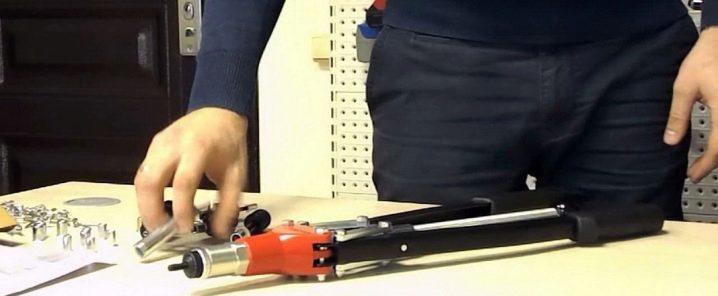
The blind riveting technique is used in mechanical engineering, in ship repair docks, in car repair shops and in construction. The connection, formed with blind rivets, withstands shock, weight and mechanical loads well. It does not break, but only stretches to the length of the rivet sleeve's possible tension. With the help of the drawing tool, it is possible to combine materials of different structure and density: metal, leather, textiles and plastic. The surfaces can be combined in any way, forming a strong and durable connection.
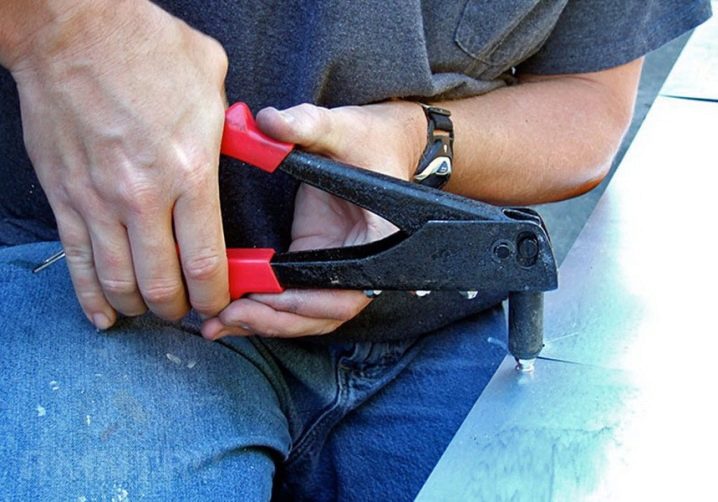
Principle of operation
In order to understand the principle of the rivet, it is necessary to imagine how the blind rivet works. The fastener is represented by two elements: a hollow cylinder with a head at the end and a rod. The cylinder is called the rivet bushing, and the size of the rivet hardware is judged by its diameter. In appearance, the metal rod resembles an ordinary nail, and differs from it only in the rounded shape of the head.

Blind rivets are made of steel, aluminum and copper alloys. But when choosing this or that material, it is necessary to take into account the likelihood of the appearance of the effect of a galvanic pair, which leads to the rapid oxidation of the weakest metal and can lead to rusting (corrosion) of the connected surfaces. This phenomenon can be observed with a combination of copper and aluminum, therefore, when choosing rivets, you need to pay attention to the material.
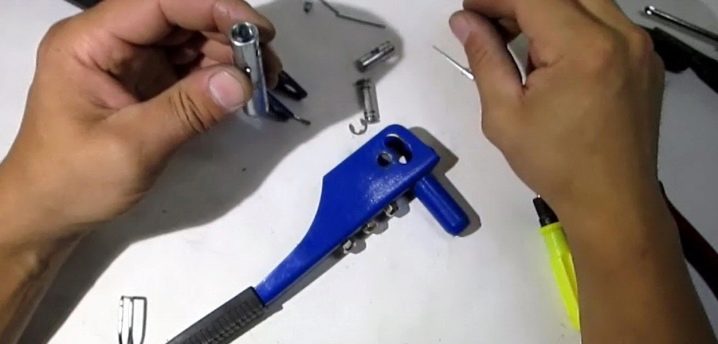
The operating principle of the pull-out rivet is as follows: after the rivet is inserted into the hole pre-drilled on both surfaces, the riveter grabs the hardware rod with the riveting head, rests its paws on the material and pulls it out. At the same time, the rod flattens the end of the sleeve and breaks off. Thus, a flattening in the form of petals is formed on the reverse side of the surfaces to be fastened, and the head of the sleeve remains on the front side.
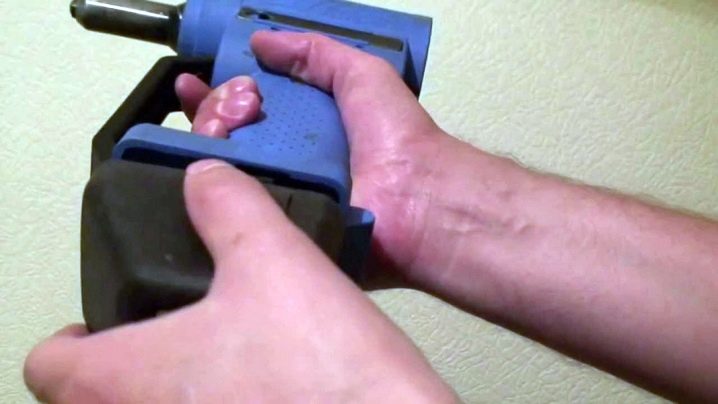
Varieties
Blind rivet attachments are available with manual (mechanical), pneumatic, battery, electric and pneumohydraulic drives. The most popular and common tools are mechanical models: their design is simple and reliable, and working with them does not require special skills.The tools are equipped with working heads of various diameters, which allows them to be used for riveting rivets of various diameters and lengths. The principle of operation of mechanical pull-type rivets is based on the principle of traction force applied by a person.
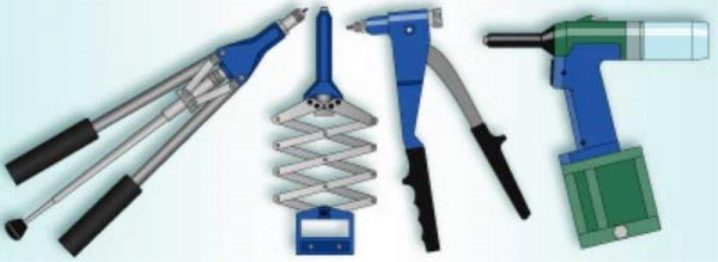
The models do not require an electrical connection and can be used in any temperature and humidity conditions. Structurally, mechanical models are similar to a pistol and are represented by spring mechanisms designed to retract rivets, and a lever system that provides force transmission. Hand-held devices, in turn, are subdivided into one-handed and two-handed models.
- One-handed riveter assumes work with a pulling force of one hand, and is intended for the installation of fastening hardware, the cross-sectional size of which does not exceed 4.9 mm. The most advanced one-handed models have a movable working head that can rotate 90, 360 and 180 degrees. This design greatly simplifies installation in hard-to-reach places and makes the tools quite popular in auto repair shops. In addition to the lever structure, one-handed riveters can have a different traction device, represented by a multi-section device called an "accordion". The main difference of such tools from traditional models is their ability to increase the force transmitted from the human hand, and the ability to work in places with limited access.

- Two-handed models much more powerful than single-handed ones, they are able to work with hardware up to 6.5 mm in diameter and are distinguished by low rod breaking force. The design feature of the tool is an adjustable front attachment. It allows you to set the desired parameters for different types of fastening hardware, and is able to adjust the working stroke. Two-handed models are produced from impact-resistant plastic and chrome-plated steel. The handles are made of special polymers that prevent the tool from slipping out during operation. In addition, most models are equipped with a container for collecting the tips of the rods, which is especially convenient when riveting in complex mechanical devices, where the ingress of foreign objects into the mechanism is extremely undesirable.
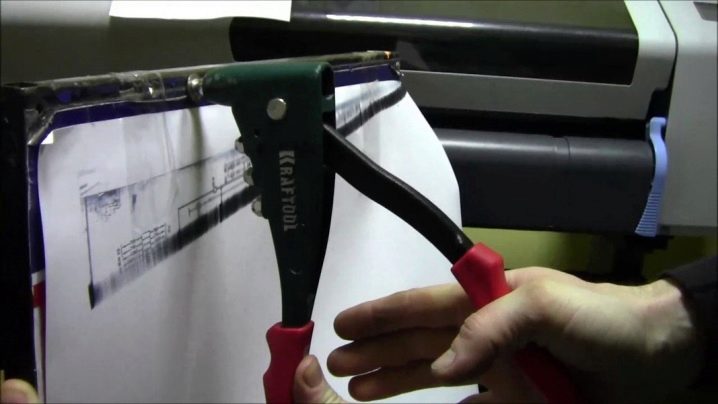
Pneumatic tools are highly productive and are used in industrial plants. The principle of operation of the models is not based on manual traction, as in mechanical samples, but on the work of compressed air supplied to the working chamber by means of a compressor. Due to the fact that each of the riveting jaws moves in its channel hole, there is practically no chance of jamming or skewing of the hardware. Rivets are installed with one touch of a button, which significantly increases the speed of work and allows the use of the tool in large-scale production.
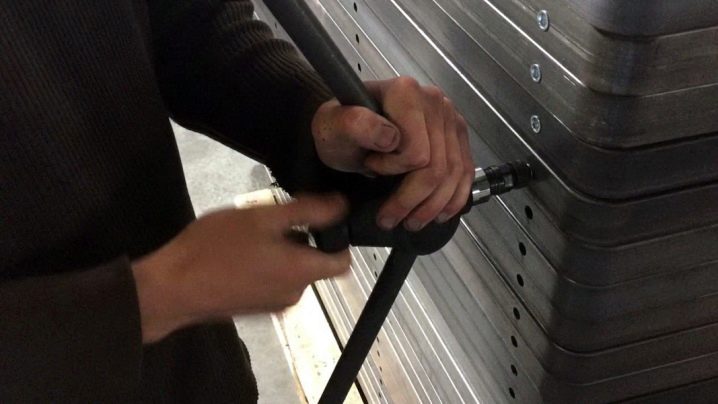
When choosing a pneumatic riveter, you should take into account a number of operating parameters of the tool. So, the higher the retraction force of the device, the thicker rivets it can work with. The maximum working pressure is also important, which for industrial models should not be lower than 6-8 atmospheres. If it is supposed to work with thick surfaces, then it is necessary to pay attention to the working stroke of the tool. It is from this value that the maximum thickness of the parts to be joined depends, which the device can handle. It is also necessary to check the number of nozzles adapted for different sizes of hardware, and pay attention to the air flow rate, which should be 30% lower than the capabilities of the compressor.

The advantages of pneumatic riveters include high productivity, low weight and short terms of work execution. Among the disadvantages are the dimensions of the products, and their high cost, which is explained by the belonging of the tool to the professional category.
Battery models outwardly resemble a drill, are distinguished by the high speed of the work carried out and the absence of the need for the application of physical efforts. In addition, unlike electric models, battery-powered devices do not have wires and do not need to be close to a power source. The disadvantages of these riveting tools include the limited battery life. Such devices are used for domestic purposes and are not intended for installation of large volumes. For example, sheathing a ventilated facade with a battery tool is unlikely to work, and riveting something in the country or in the garage is quite convenient.
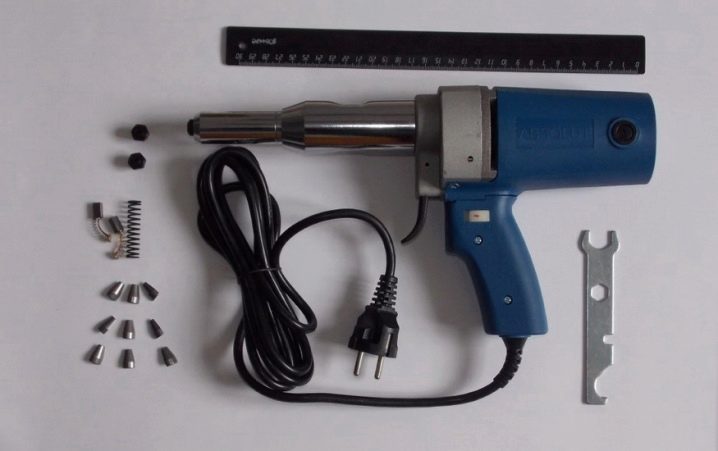
Electric models are able to work exactly as long as needed, and do not depend on the volume of the accumulator or the operation of the compressor unit. The electric riveter resembles an electric drill: the principle of its operation is based on the transfer of torque to the riveting head and its clockwise rotation. The riveter is equipped with an electric wire, the presence of which is fully compensated by the ability of the device to work in any temperature conditions.
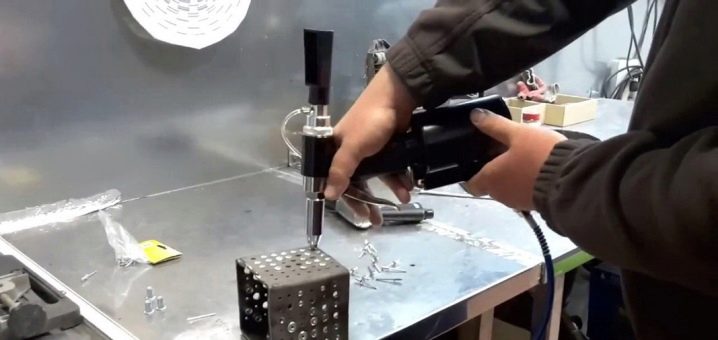
With skillful handling, the blind riveter can become an indispensable assistant in repair and construction.
For how to use a mechanical riveter, see the next video.













The comment was sent successfully.